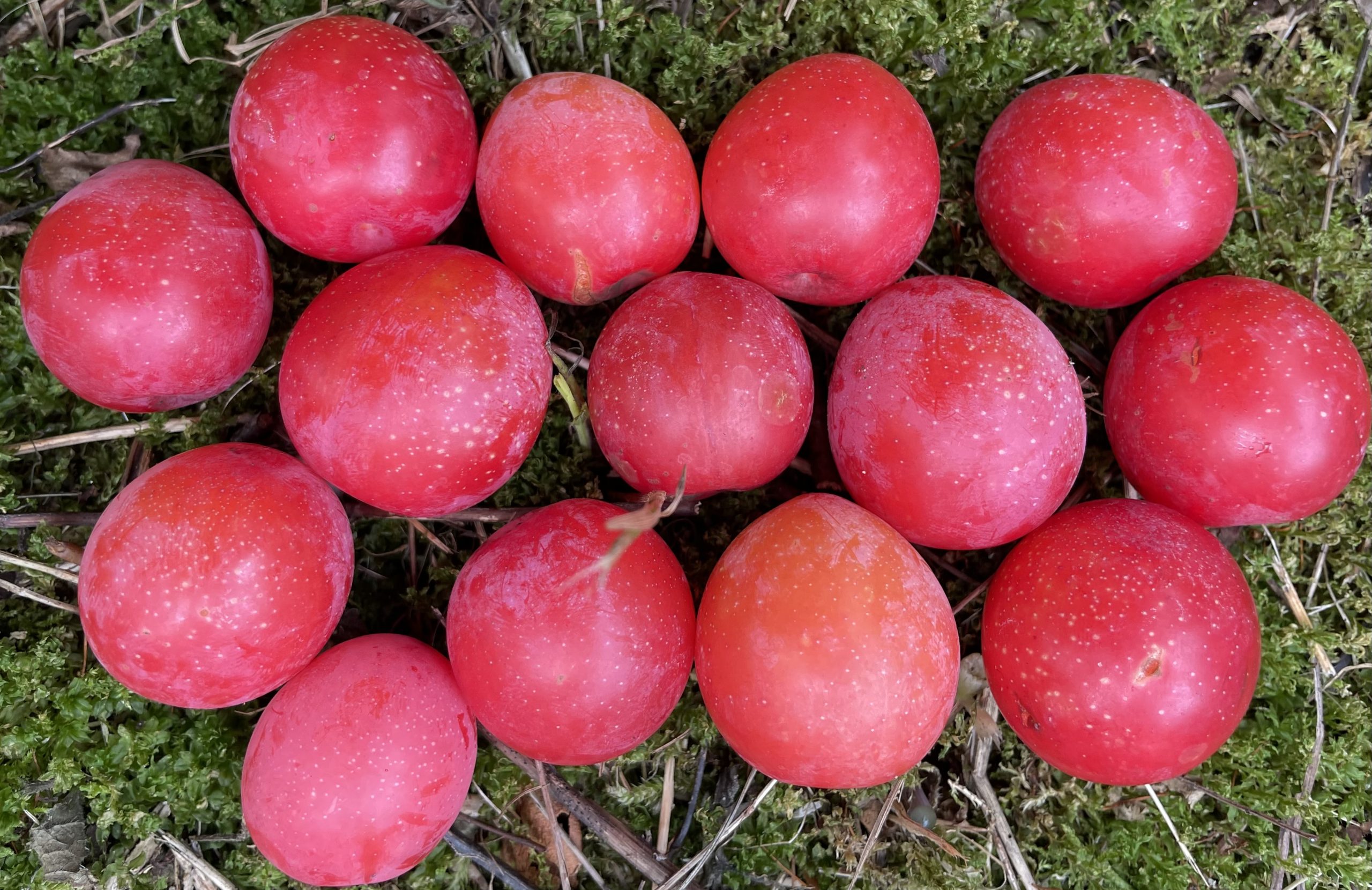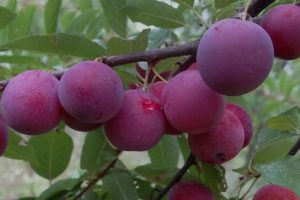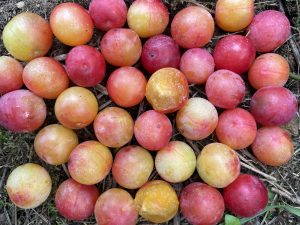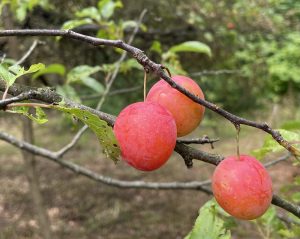Experience-Seeds-Knowledge-Plant Discoveries-Ecological Enrichment-Join Now Click Here!


The Wild Goose Plum-From One Seed to Another



Wild plums are found everywhere in North America. Many of them look alike. Some are small shrubs like the beach plum. Others are tall trees to thirty feet like the Chickasaw plum. They thrive in the mountains. Some live in wetlands. Others are found in the desert. I think I have grown them all. But there are always new discoveries.
They do share some common traits. None of them are commercially grown. Most are just too tart or have an extremely astringent skin making fresh eating without removing the skin undesirable. Their small size makes them suitable for processing into jam or jelly and for use in pastries, pies and wine. They are usually wild collected. Plum patches are sometimes kept secret if possible. Starting in the early 1900’s plums were often found and grafted using the best finds of the day. This was before the advent of the European and Japanese plums. Such is the case of the “Wild Goose” plum. It was found as a selection of the species Prunus hortulana found throughout the Midwest. The oblong shape of the fruit with a slightly pointed end is unique. It has a non-astringent skin along with a sweet yellow interior. This plum ripens starting in July and provided some of the best and sweetest of fruits at that time of year. For me it is by far the earliest ripening plum going a full month prior to all the others. Relatively free of insects and disease the plants are highly immune to black knot and plum curculio. As a result, it soon became a hit and was distributed mostly as grafted trees. It is possible the plant also produced useful seedlings similar to the original in some ways and those may have been widely distributed. As far as I know, the story of a hunter finding the pit in the stomach of a wild goose he shot is true.
At my farm, when I first heard about this species, I could not find seeds, but did find a researcher from the North American Fruit Explorers who had the original plant. We exchanged seeds and scions of various plants. I was able to graft it, and plant it on a wind swept hillside in the middle of my pasture. The results were slow to come. It took 8 years before fruiting began. The fruiting was extremely light but I quickly established seedlings of it next to the grafted trees which lead to much higher yields. Eventually I could see this was a universal species willing to hybridize with beach plum, dunbars plum and chickasaw plum. These are the only plums nearby that flower roughly at the same time of which there is overlap of blossoming. This of course produced some amazing seedlings even higher yielding than the grafted tree. (These new named varieties will be listed shortly after harvest this year. ) Of course the original named variety “Wild Goose” with seed is also available. I recommend both grafting this selection and growing it from seed. The species outside of its home range flourishes in Michigan and can easily establish in poor soil without irrigation and spray. The most vigorous seedlings are also the heaviest bearing. Even the small fruited selections are worth growing. As a jam maker, I always look for the right combination of tart and sweet. Such is the case of the Wild Goose. Its the gift that provides both eating plums and a great jam maker right up there with beach plum. Will it ever become commercialized? It could even with its low yields. I recommend growing its seedlings nearby to improve the yields.
Spacing can be 20 by 20. 108 trees per acre. Or spacing 5-10 ft. apart as a hedgerow. Seeds are processed and cleaned several times and then stored at room temperature for 30 days to let the embryo to continue developing. After that period the seeds are refrigerated. On a sidenote: Dr. Bronners soap makes a great seed cleaner for the excess fruit bits and to prevent mold.
Once people taste this plum it soon becomes a favorite. Wild Goose Plums Seeds and Scions